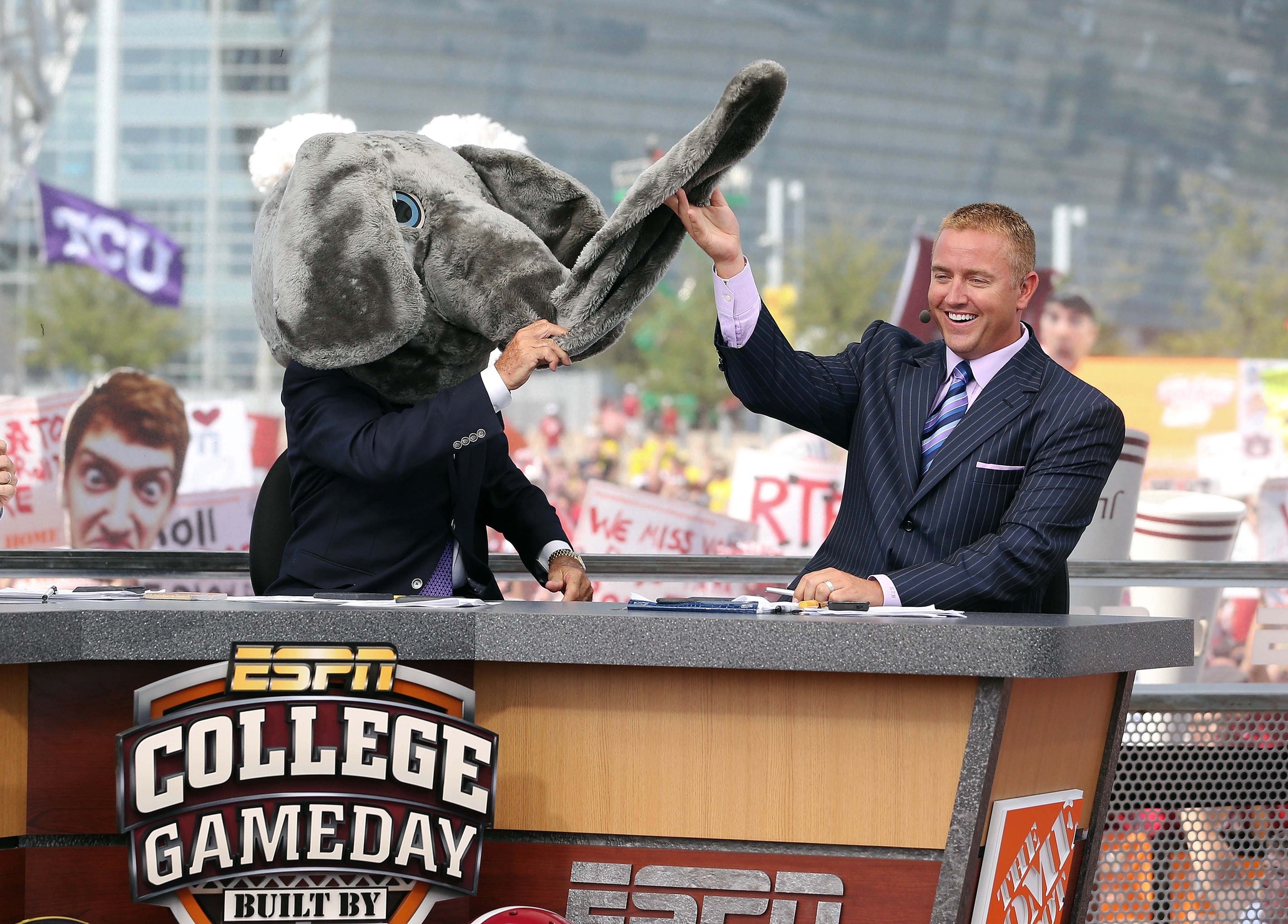Fears about declining attendance at college football games have grown so bad that schools are studying Major League Soccer for tips on keeping butts in the seats.
That’s the upshot of a recent Wall Street Journal piece on declining attendance at college football games: Schools are actually paying Kansas City’s MLS club to explain how to retain fans.
Meanwhile, Michigan Men are debating the propriety of fireworks shows at the Big House.
It used to be that fans coveted tickets to the game in places like Ann Arbor and Tuscaloosa. Now we’re talking t-shirt cannons and pyrotechnics to entice them into the stadium.
As school administrators grasp at straws to stem the tide of fans exiting the stands for the comforts of home, the common refrain is that stadium experience is now competing with big-screen TVs. TV is winning in the survival of the fittest.
Close, but no remote.
Framing the issue that way assumes an incorrect level of inevitability to the downturn in paying customers. In fact, TV doesn’t just offer a superior viewing experience at considerably lower cost. College football is now built around watching it on TV. When they started cashing in on television contracts, the schools sold control of the sport to media companies. The networks, in turn, have built the sport into a television product.
ESPN and the like aren’t shelling out ever larger media rights deals to worry about how many people are going to games. They’re leveraging their inventory to maximize the value it returns to them. They’re dictating who plays whom, where they play and when – down to the minute of the kickoff. Meanwhile, they’re dangling lucrative deals at schools to ditch their traditional conference homes for more lucrative media market amalgamations.
Consumers can now plan their Saturdays around watching entertaining games from morning until well past midnight, with time for their favorite teams somewhere in that window. And while it may be a pain in the ass for fans of schools like Akron and Northern Illinois to get to the stadium on a Tuesday night, ESPN serves up tasty #MACtion in mid-week primetime.
The payoff for the schools has come in the form of greater TV revenue and broadened exposure. Yet, as their cornerstone boosters and season ticket holders grow old and exit the market, athletic departments are finding that their new target audience came of age in a time when actually being at game just isn’t that big of a deal. In other words, the new generation of fans are consuming the product the way that it is now intended for them.
So, when we say college football is more popular now than ever before, we’re really talking “College Football on TV.” The networks can tilt the playing field so far in their favor that it’s disingenuous to say the schools are competing with TV to get fans through the turnstiles. In reality, the two sides are conspiring with each other to keep fans at home.
Eventually, the schools might pick up on the fact that they let the fox (and Mouse) in the hen house. Unfortunately for them, it’s probably too late to do anything about it.
